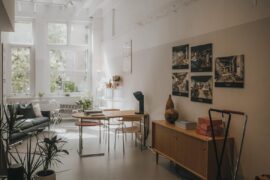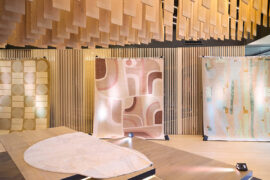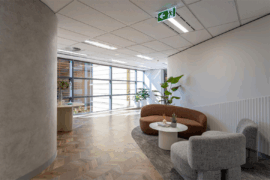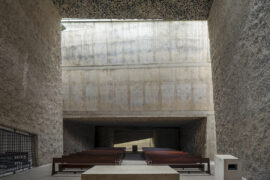Are cities too clean, too predictable and ultimately too smart for their own good? Taking Korea’s Songdo as an example, Adam Scott from FreeState, and Global Head of Design at HASSELL tells us how we might just be missing the mark when it comes to planning a city.

The rationale of the ‘Smart’ as a means for improving, designing and building our cities has reached a tipping point of acceptability. Indeed, such is the take-up rate among urban planners that we are today returning to the age of the emperors, one where it is possible – and for some desirable – to design and populate a city from scratch, the most obvious example being South Korea’s Songdo, the world’s so-called smartest city. Unfortunately, as enamoured as we are by our technological prowess, we are in danger of losing sight of what cities are all about: the experiences of people being people.
A dystopia
From the perspective of the urban planners’ spreadsheet, it’s easy to see why Songdo might appeal. Built on reclaimed land outside Seoul, it is a year zero, purpose-built city; a clean, super-connected mega-sized business district that its planners say borrows from the best of the world’s greatest cities. It has its own Venetian canal system and central park. It’s underpinned by a package of ‘smart services’ managing everything from the home to traffic to health. It’s made for an environmentally sustainable community. It offers, in the words of one of its key IT providers, “the ultimate lifestyle and work experience.”
However, like the branded cities of old built by kings as singular testaments to their omniscient powers, Songdo is also the result of a fundamental misunderstanding of what it takes for a city to be a city. A joint venture between American developers, South Korean constructors and local government, it mistakes people for categories of users, re-imagining the experiences of financiers, technologists, bio-pharmacists, commuters, residents, patients and relaxers as part of a vast and predetermined system of input-output solutions, one so technologically advanced as to have done away with the need for ‘3-D’ or ‘dirty’, ‘dangerous’ or ‘difficult’ industries. Largely bereft, therefore, of the messiness of manufacturing and municipal service industries, of crowds, of dirt, and of the organic and often anarchic growth of the street, it is an invention dedicated to an ‘international community’ of ‘forward-thinking individuals and companies’. It’s so clean – safe and predictable – as to be hyper-hygienically unnatural. It’s not home. It’s a technocrat’s wet dream – had in the 1950s.
Insert human
Much like how technologists tend to champion the democracy of the internet, advocates of the smart city speak of the equality of access and opportunity, strategically prioritising technical platforms, infrastructure, project development and information systems in the name of tens of thousands of projected users. Songdo IBD (the city’s local authority) takes it a step further, speaking of creating “an unparalleled quality of life as technology, resources and innovation come together to create a world class international community.”
Leaving aside the moral implications of its somewhat rarefied class of desirable citizens, Songdo’s philosophy for city building begins with the absence of that which makes a city a city: the human. Cities do not ‘create’ communities. People form communities, and cities – as the lead developer of Kings Cross Central Argent St George stated in its Principles for a Human City (2000) – are where people do life. And by people, it means everyone who has any interest – past, present or future – in the city, which is why before making any plans for what would become a fiendishly complex project, Argent’s chief executive Roger Madelin would meet 7,500 people at 353 different meetings, to which he travelled on his bicycle.
It’s worth pausing for a moment on this, the image of the head of one of the world’s leading developers cycling about a rundown piece of London to listen to the experiences, views and ideas of thousands of its people. Compare this to the relatively people-less top of the value stack that serves as the Smart strategy for a city like Songdo. Indeed, compare it with the consultation process that goes into any large urban development. In a recent piece of research envisioning the themes for the strategic framework for the development of Brisbane’s Southbank, the difference between what we imagined people wanted and what we discovered by getting out from behind our desks and asking was startling: while we came up with a set of well-meaning, positive and worthy themes, the people who live, work and regularly visit Southbank wanted something much more subversive, underground and risky.
Roger Madelin’s 353 meetings served as the evidence base for the philosophy of principles that sees Kings Cross Central having become – 17 years later – exactly what it set out to be: ‘a public piece of London’, a mixed use quarter, home to two schools, a university, a cookery school, a mobile urban garden, 2,000 new homes (a staggering 50 per cent of which are affordable housing), and 24 acres of open space. This from a man on a bicycle whose vision was informed by listening to the very people his work would directly affect. Cities, lest we forget, begin with people.
Photography by Robert Stainforth/Alamy
Adam Scott is a user experience design specialist at FreeState (which recently merged with HASSELL). Read Scott’s full article here.
INDESIGN is on instagram
Follow @indesignlive
A searchable and comprehensive guide for specifying leading products and their suppliers
Keep up to date with the latest and greatest from our industry BFF's!

For a closer look behind the creative process, watch this video interview with Sebastian Nash, where he explores the making of King Living’s textile range – from fibre choices to design intent.

Sydney’s newest design concept store, HOW WE LIVE, explores the overlap between home and workplace – with a Surry Hills pop-up from Friday 28th November.

London-based design duo Raw Edges have joined forces with Established & Sons and Tongue & Groove to introduce Wall to Wall – a hand-stained, “living collection” that transforms parquet flooring into a canvas of colour, pattern, and possibility.

Carme Pinós will be the first Spanish architect to join the ranks as a designer of Melbourne’s MPavilion. We meet with her to find out what’s in store and what to expect.

Saturday Indesign is back in September. In this second drop of names for the Melbourne event, see which brands will be at the year’s most anticipated design event.
The internet never sleeps! Here's the stuff you might have missed

Hiwa, the University of Auckland’s six-storey recreation centre by Warren and Mahoney with MJMA Toronto and Haumi, has taken out Sport Architecture at the 2025 World Architecture Festival. A vertical village for wellbeing and connection, the project continues its run of global accolades as a new benchmark for campus life and student experience.

Tongue & Groove hosted a lively gathering to celebrate two new collections by Greg Natale, bringing together designers and industry peers.

A thoughtful, low-waste redesign by PMG Group in collaboration with Goodman has transformed a dated office into a calm, contemporary workspace featuring a coastal-inspired palette and Milliken flooring for a refined finish.

The World Architecture Festival has named The Holy Redeemer Church and Community Centre of Las Chumberas in La Laguna, Spain as World Building of the Year 2025, alongside major winners in interiors, future projects and landscape.